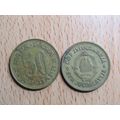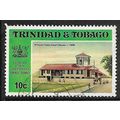Van Gogh, Vincent - The Zouave - art postcard (Medici)
- Condition : Unused
- Dispatch : 2 Days
- Brand : None
- ID# : 207316766
- Quantity : 1 item
- Views : 91
- Location : United Kingdom

- Seller : justthebook (+1703)
- Barcode : None
- Start : Mon 14 Mar 2022 18:42:18 (EDT)
- Close : Run Until Sold
- Remain : Run Until Sold
Checks/Cheques
 for 1 item(s) edit
for 1 item(s) edit
Shipping Calculator
More Listings from This Seller view all
Seller's Description
- Art Postcard
- Work of art title: The Zouave
- Artist (if known): Vincent Van Gogh
- Media or other details: painting
- Publisher / Gallery: Medici Society, London / Collection of Albert Lasker
- Postally used: no
- Stamp & postmark details (if relevant):
- Size: Modern
- Notes & condition details:
NOTES:
Size: 'Modern' is usually around 6in x 4in or larger / 'Old Standard' is usually around 5½in x 3½in. Larger sizes mentioned, but if you need to know the exact size please ask as this can vary.
All postcards are not totally new and are pre-owned. It's inevitable that older cards may show signs of ageing and use, particularly if sent through the post. Any faults other than normal ageing are noted.
Stock No.: A1315
Please ask if you need any other information and I will do the best I can to answer.
------------------------------------------------
Postage and packing charge should be showing for your location (contact if not sure).
UK - PayPal, Cheque (from UK bank) or postal order
I will give a full refund if you are not fully satisfied with the postcard.
----------------------------------------------
Vincent Willem van Gogh (Dutch: [ˈvɪnsənt ˈʋɪləɱ vɑŋ ˈɣɔx] (audio speaker iconlisten);[note 1] 30 March 1853 – 29 July 1890) was a Dutch Post-Impressionist painter who posthumously became one of the most famous and influential figures in Western art history. In a decade, he created about 2,100 artworks, including around 860 oil paintings, most of which date from the last two years of his life. They include landscapes, still lifes, portraits, and self-portraits, and are characterised by bold colours and dramatic, impulsive and expressive brushwork that contributed to the foundations of modern art. Not commercially successful, he struggled with severe depression and poverty, eventually leading to his suicide at age thirty-seven.
Born into an upper-middle-class family, Van Gogh drew as a child and was serious, quiet, and thoughtful. As a young man, he worked as an art dealer, often traveling, but became depressed after he was transferred to London. He turned to religion and spent time as a Protestant missionary in southern Belgium. He drifted in ill health and solitude before taking up painting in 1881, having moved back home with his parents. His younger brother Theo supported him financially; the two kept a long correspondence by letter. His early works, mostly still lifes and depictions of peasant labourers, contain few signs of the vivid colour that distinguished his later work. In 1886, he moved to Paris, where he met members of the avant-garde, including Émile Bernard and Paul Gauguin, who were reacting against the Impressionist sensibility. As his work developed he created a new approach to still lifes and local landscapes. His paintings grew brighter as he developed a style that became fully realised during his stay in Arles in the South of France in 1888. During this period he broadened his subject matter to include series of olive trees, wheat fields and sunflowers.
Van Gogh suffered from psychotic episodes and delusions and though he worried about his mental stability, he often neglected his physical health, did not eat properly and drank heavily. His friendship with Gauguin ended after a confrontation with a razor when, in a rage, he severed part of his own left ear. He spent time in psychiatric hospitals, including a period at Saint-Rémy. After he discharged himself and moved to the Auberge Ravoux in Auvers-sur-Oise near Paris, he came under the care of the homeopathic doctor Paul Gachet. His depression persisted, and on 27 July 1890, Van Gogh is believed to have shot himself in the chest with a revolver, dying from his injuries two days later.
Van Gogh was commercially unsuccessful during his lifetime, and he was considered a madman and a failure. As he became famous only after his suicide, he came to be seen as a misunderstood genius in the public imagination.[6] His reputation grew in the early 20th century as elements of his style came to be incorporated by the Fauves and German Expressionists. He attained widespread critical and commercial success over the ensuing decades, and is remembered as an important but tragic painter whose troubled personality typifies the romantic ideal of the tortured artist. Today, Van Gogh's works are among the world's most expensive paintings to have ever sold, and his legacy is honoured by a museum in his name, the Van Gogh Museum in Amsterdam, which holds the world's largest collection of his paintings and drawings.
The Zouaves were a class of light infantry regiments of the French Army serving between 1830 and 1962 and linked to French North Africa; as well as some units of other countries modelled upon them. The zouaves, along with the indigenous Tirailleurs Algeriens, were among the most decorated units of the French Army.
It was initially intended that the zouaves would be a regiment of Berber volunteers from the Zwawa group of tribes in Algeria—thus the French term zouave—who had gained a martial reputation fighting for local rulers under the Ottoman Empire. The regiment was to consist of sixteen hundred Zwawa Berbers, French non-commissioned officers and French officers. Five hundred Zwawa were recruited in August and September 1830. Twelve years later, zouaves began to be recruited almost exclusively from Europeans, a policy which continued until the final dissolution of these regiments after the Algerian War.
In the 1860s, new units in several other countries called themselves zouaves. The Papal Zouaves were organized by Louis Juchault de Lamoricière, a former commander of North African zouaves, while a former zouave sergeant, François Rochebrune, organized the Polish Zouaves of Death who fought against Russia in the January Uprising of 1863–64. In the 1870s, former Papal Zouaves formed the cadre for a short-lived Spanish zouave unit. The "zouave" title was also used by Brazilian units of black volunteers in the Paraguayan War,[1] possibly due to a perceived link with Africa.
In the United States, zouaves were brought to public attention by Elmer E. Ellsworth, who created and ran a drill company called the "Zouave Cadets". The drill company toured nationally. Zouave units were then raised on both sides of the American Civil War of 1861–65; including a regiment under Ellsworth's command, the 11th New York Infantry—the New York "Fire Zouaves".
The distinctive uniforms of French and other zouave units was of North African origin. It generally included short open-fronted jackets, baggy trousers (serouel), sashes, and a fez-like chéchia head-dress.
Listing Information
| Listing Type | Gallery Listing |
| Listing ID# | 207316766 |
| Start Time | Mon 14 Mar 2022 18:42:18 (EDT) |
| Close Time | Run Until Sold |
| Starting Bid | Fixed Price (no bidding) |
| Item Condition | Unused |
| Bids | 0 |
| Views | 91 |
| Dispatch Time | 2 Days |
| Quantity | 1 |
| Location | United Kingdom |
| Auto Extend | No |



















